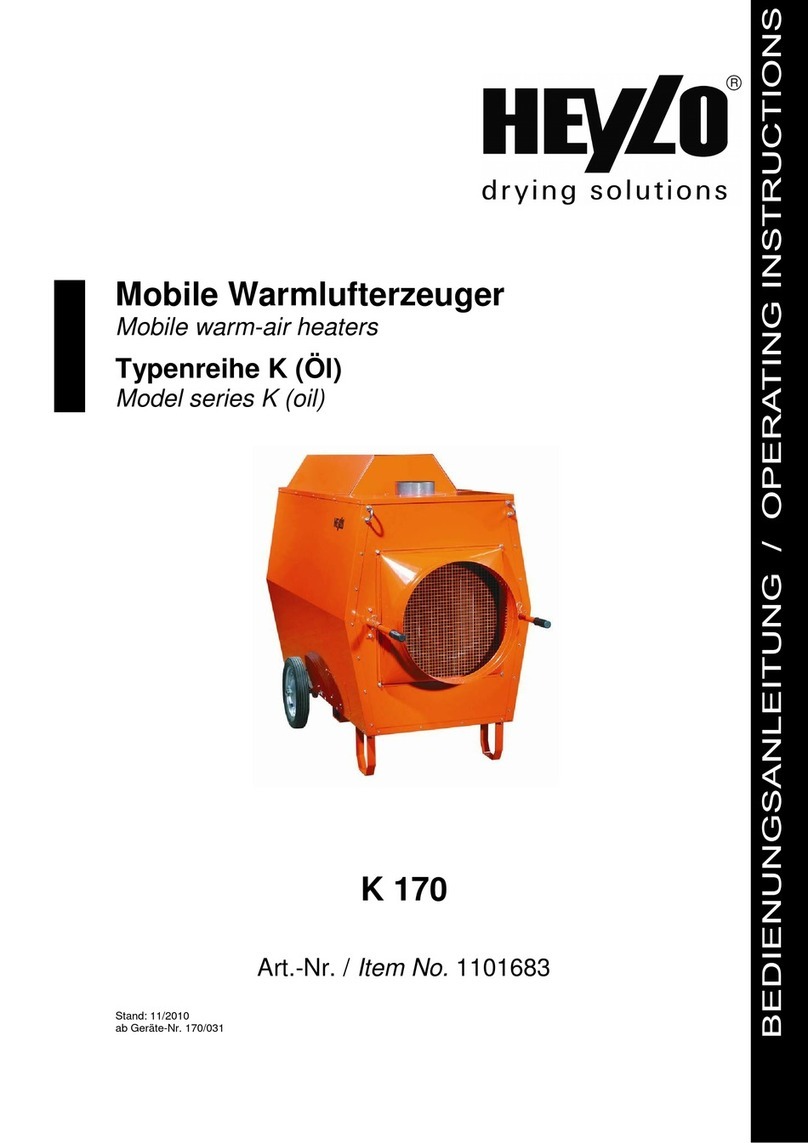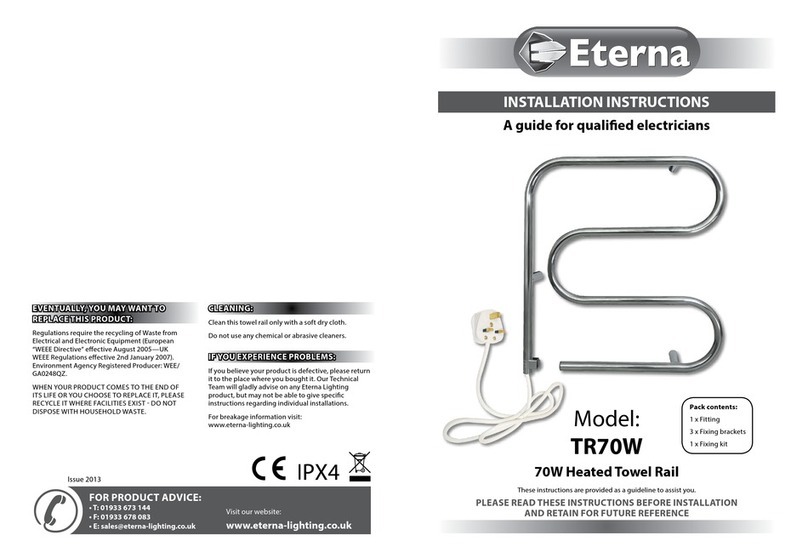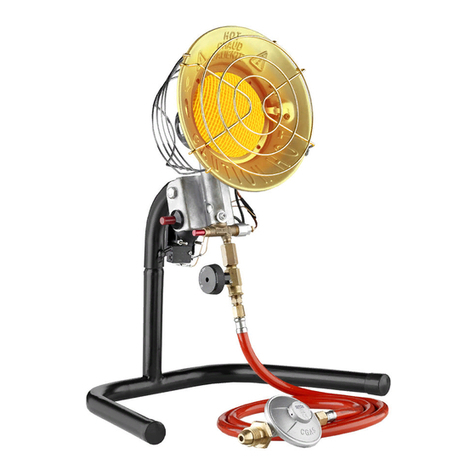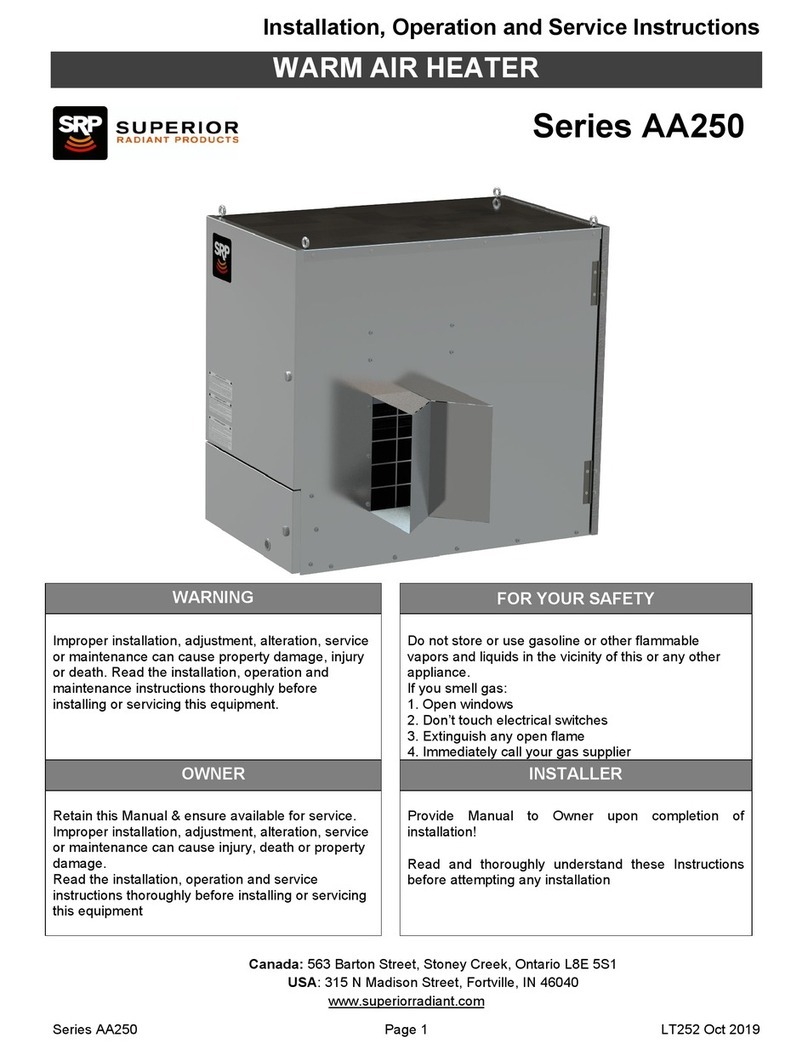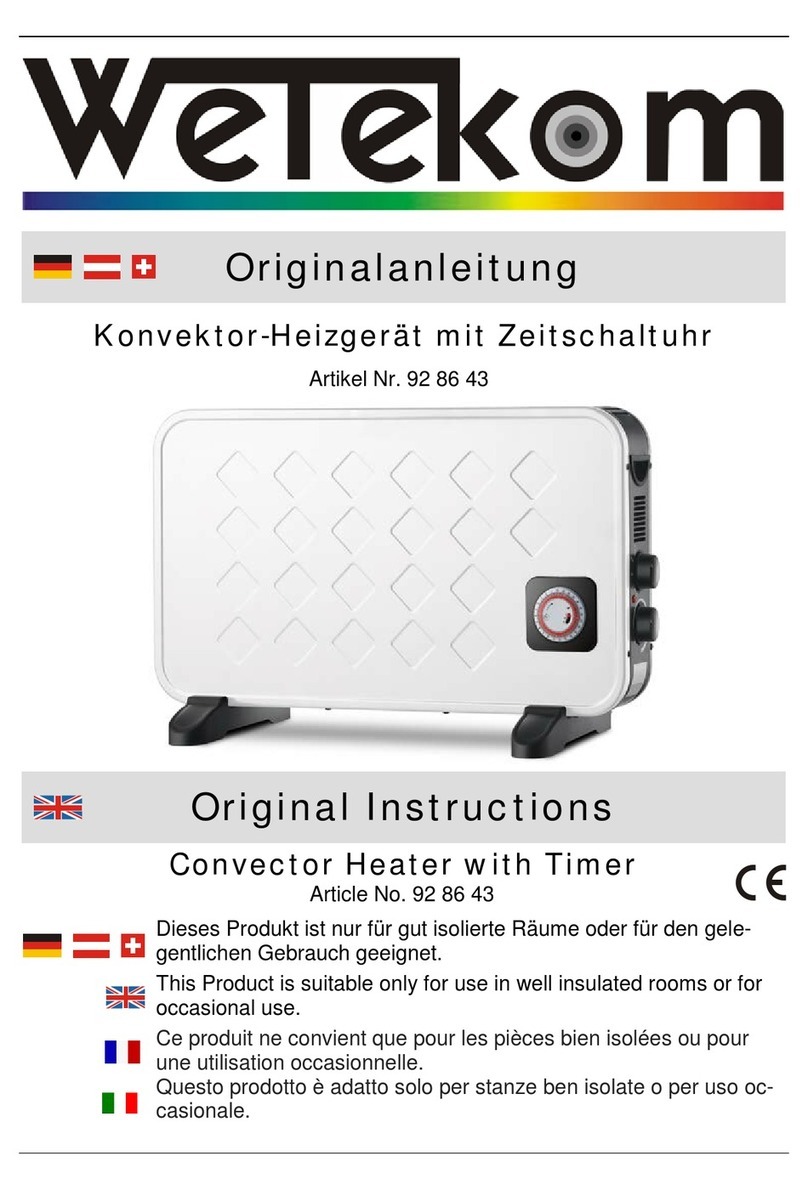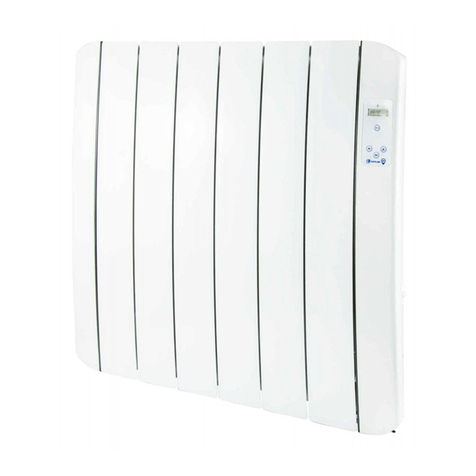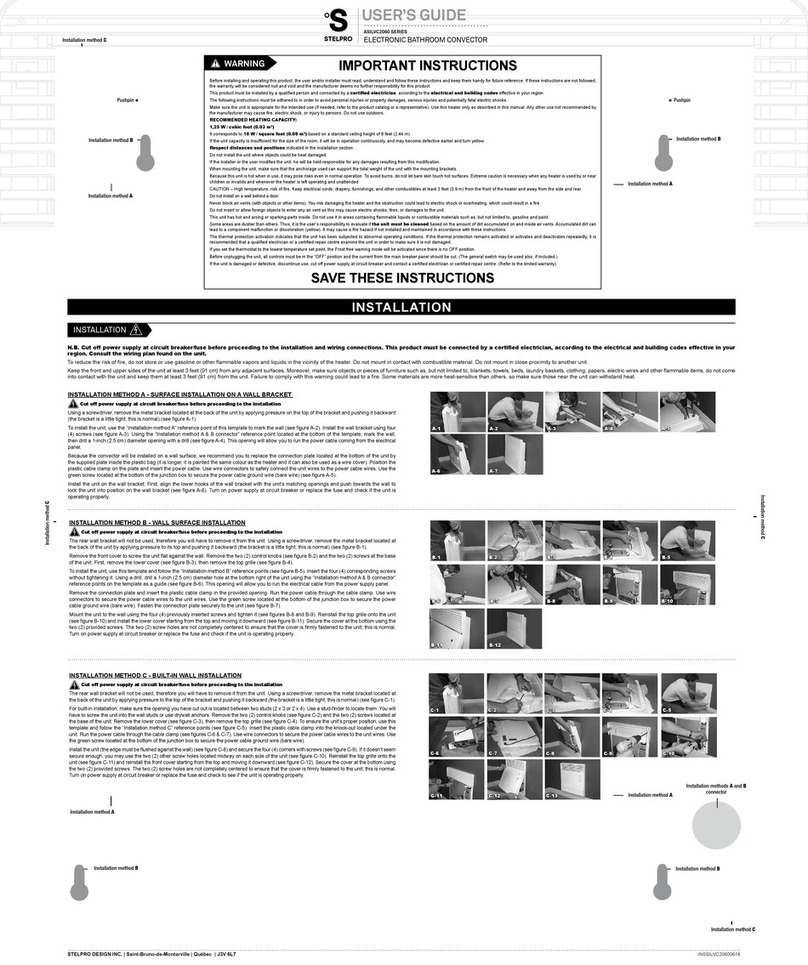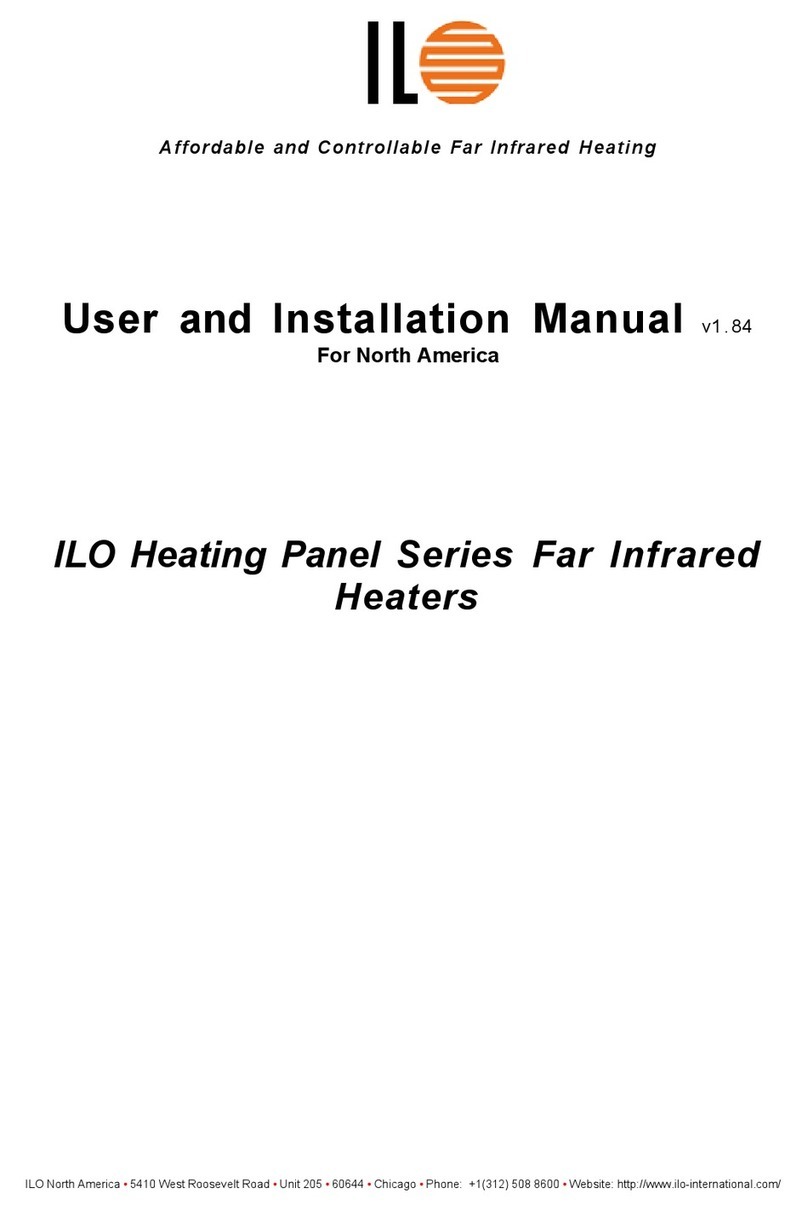
SuperiorFireplaces.US.com 126838-01C4
SAFETY
Continued
1. Thisapplianceisonly for usewiththetype
of gas indicated on the rating plate. This
appliance is not convertible for use with
other gases.
2. Do not place propane/LP supply tank(s)
inside any structure. Locate propane/LP
supplytank(s)outdoors (propane/LPunits
only).
3. Topreventperformanceproblems,the use
ofapropane/LPtank of less than 100 lbs.
capacity is not recommended (propane/
LP units only).
4. If you smell gas
• shut off gas supply
• do not try to light any appliance
• do not touchany electrical switch; do not
use any phone in your building
• immediately call your gas supplier from
aneighbor’s phone. Follow the gas sup-
plier’s instructions
• if you cannot reach your gas supplier,
call the fire department
5. This heater shall not be installed in a
bedroom or bathroom.
6. Do not burn solid-fuel in a fireplace in
whichavent-freeroom heater is installed.
7. Beforeinstallinginasolidfuel-burning fire-
place, the chimney flue and firebox must
be cleaned of soot, creosote, ashes and
loosepaintbyaqualifiedchimneycleaner.
Creosotewilligniteif highlyheated.Adirty
chimney flue may create and distribute
soot within the house. Inspect chimney
flue and firebox for damage. If damaged,
repair flue before operating heater.
8. Iffireplacehasglassdoors, never operate
this heater with glass doors closed. Any
glassdoorsshall befullyopened whenthe
appliance is in operation. If you operate
heater with doors closed, heat buildup
inside fireplace will cause glass to burst.
Make sure there are no obstructions
across openings of fireplace.
9. This log heater is designed to be smoke-
less.Iflogseverappear to smoke, turn off
heaterandcallaqualified service person.
NOTE: During initial operation, slight
smokingcouldoccur duetologcuring and
heater burning manufacturing residues.
10. To prevent the creation of soot, follow the
instructionsinCleaning andMaintenance,
Page 25.
11. Before using furniture polish, wax, carpet
cleaner or similar products, turn heater off.
If heated, the vapors from these products
may create a white powder residue within
burnerboxoronadjacentwallsorfurniture.
12. This heater needs fresh, outside air ven-
tilationtorunproperly.This heater has an
Oxygen Depletion Sensing (ODS) safety
shutoff system.The ODS shuts down the
heater if not enough fresh air is available.
See Air for Combustion and Ventilation,
Page 6. If heater keeps shutting off, see
Troubleshooting, Page 25.
13. Do not run heater
• where flammable liquids or vapors are
used or stored
• under dusty conditions
14. Donotusethisheatertocookfood orburn
paper or other objects.
15. Do not use this room heater if any part
has been under water. Immediately call
a qualified service technician to inspect
the room heater and to replace any part
of the control system and any gas control
which has been under water.
16. Donotoperateheaterif any log isbroken.
Do not operate heater if a log is chipped
(dime-sized or larger).
17. Turn heater off and let cool before servic-
ing.Onlyaqualifiedservice personshould
service and repair heater.
18. Operating heater above elevations of
4,500 feet could cause pilot outage.
19. Provide adequate clearances around air
openings.
20. Solid fuels shall not be burned in a fire-
place in which an unvented room heater
is installed.
21. Installation and the provisions for com-
bustion and ventilation air must conform
with the National Fuel Gas Code, ANSI
Z223.1/NFPA 54.
22. Wheninstallingas a ventedapplianceina
manufactured home or mobile home, the
installation must conform with the Manu-
factured Home Construction and Safety
Standard, Title 24 CFR, Part 3280, or
whenapplicable,withManufactureHome
Installations Standard, ANSI/NCBCS
A225.1/NFPZ 501A.








